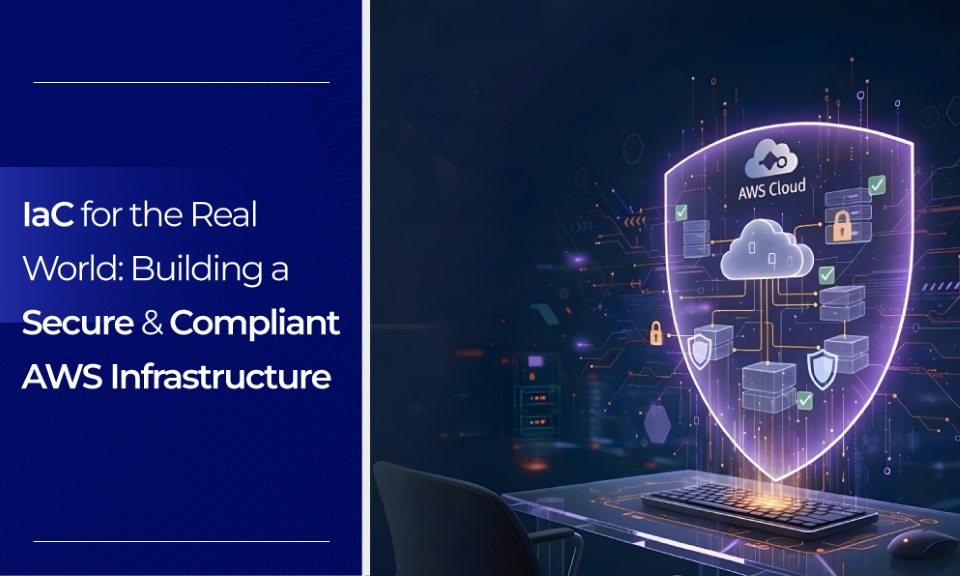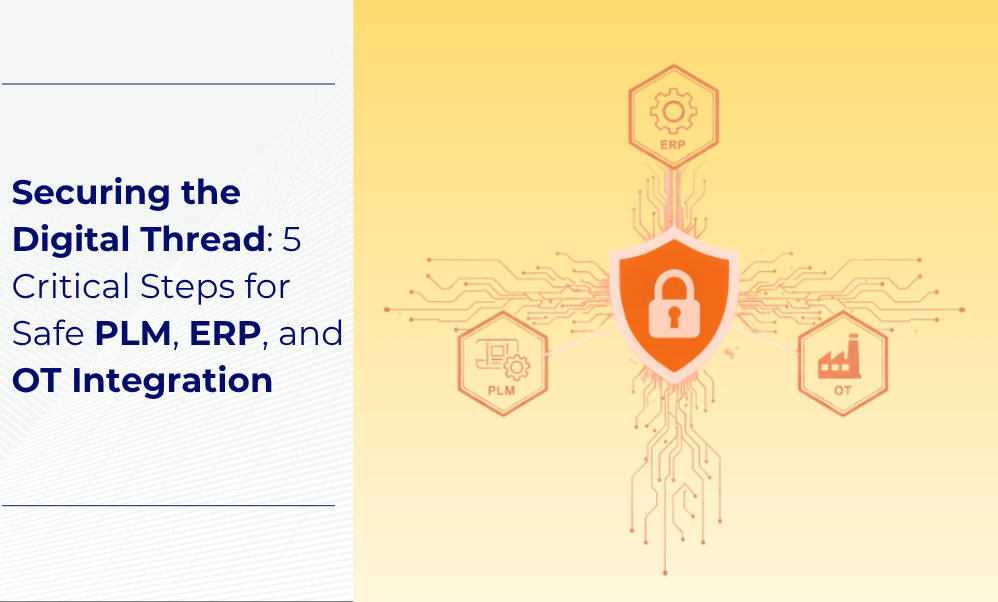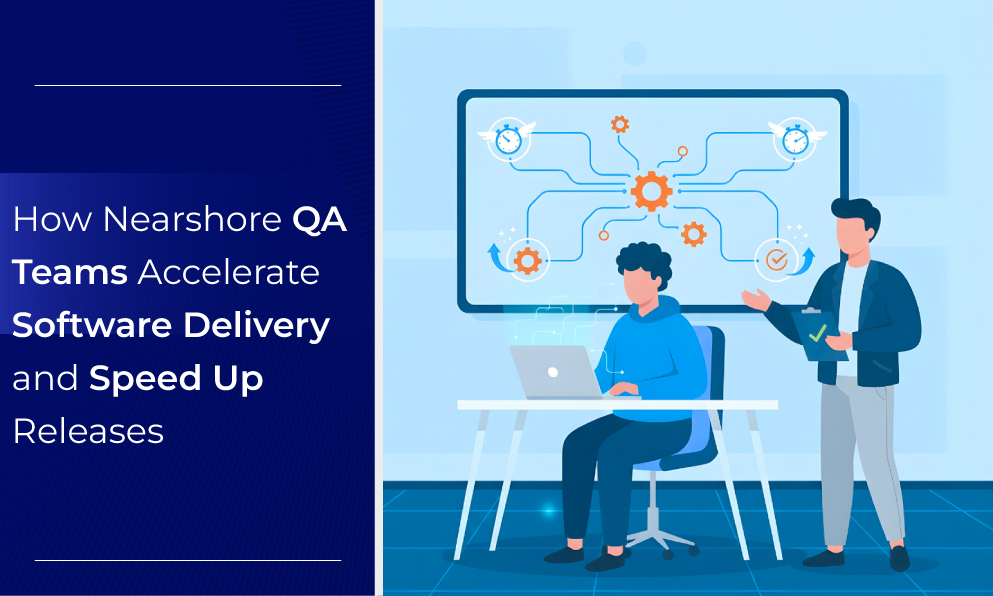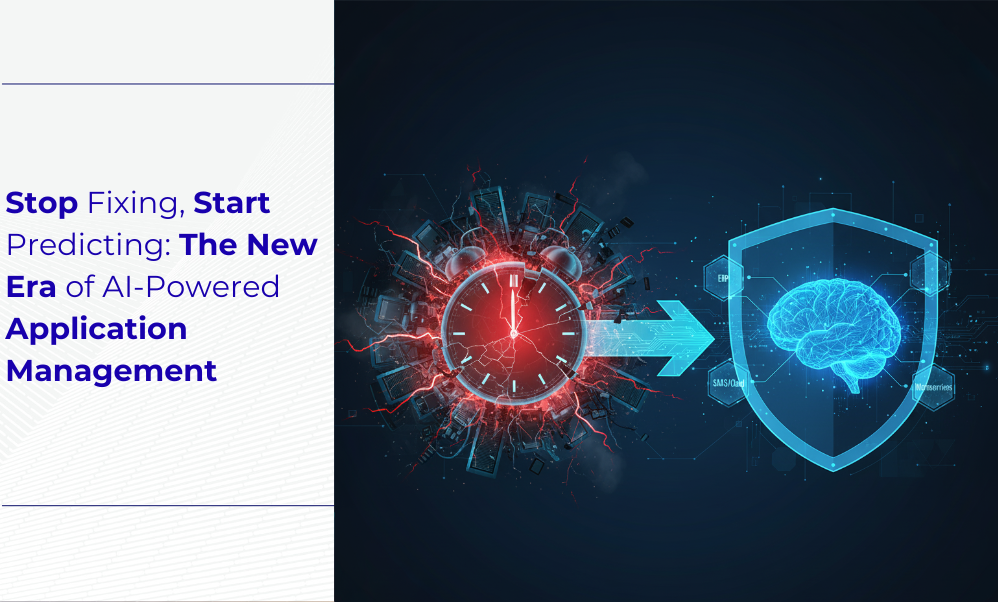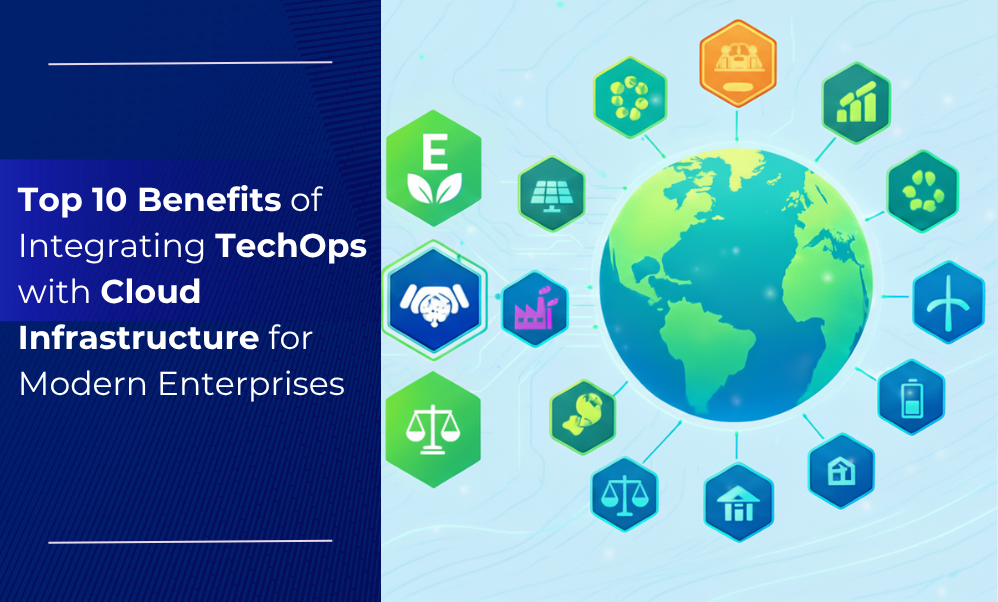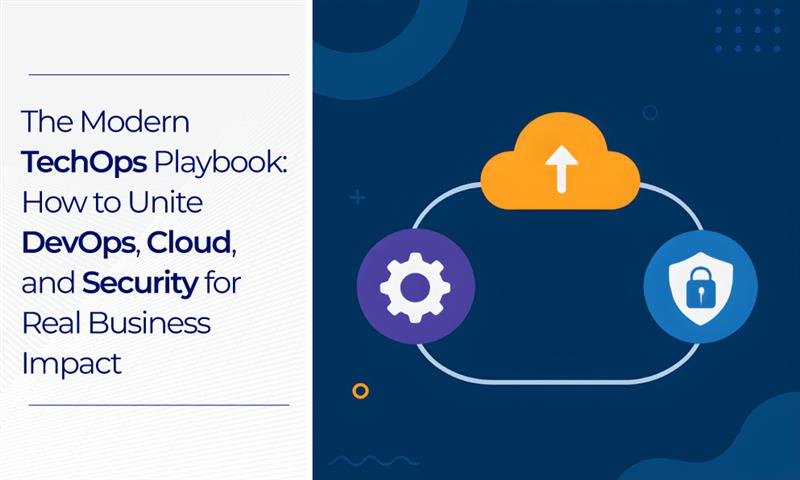Introduction
Amazon Web Services (AWS) offers enterprises unprecedented power to innovate, scale, and accelerate their time-to-market. But this power comes with profound complexity. In the rush to build, many organizations rely on manual configuration—"click-ops" in the AWS console—to deploy their critical infrastructure. This manual approach is the single greatest liability in a modern cloud environment.
A single misconfigured security group, an S3 bucket set to "public," or an unencrypted database can lead to catastrophic data breaches, compliance failures, and uncontrolled costs. The "real world" of AWS is not just about agility; it's about managing this inherent risk. The solution is to treat your infrastructure with the same discipline as your application: you must build it as code.
Infrastructure as Code (IaC) is the definitive modern playbook for building a secure and compliant AWS infrastructure. For any organization serious about security, governance, and scale, IaC is not just a best practice—it is a non-negotiable strategy for risk management. As a global IT leader with deep, certified AWS expertise, BJIT utilizes this playbook to help organizations move from a state of reactive, high-risk firefighting to one of proactive, automated, and auditable control.
The Core Problem: Why Manual "Click-Ops" Fails at Scale
"Click-ops"—the practice of deploying and managing infrastructure by manually clicking through the AWS web console—is a tempting and easy way to start. However, it is a model that is guaranteed to fail.
This manual approach introduces three critical business risks that directly impact revenue, reputation, and operational stability.
1. The Inevitability of Human Error and "Configuration Drift"
When an engineer manually provisions a server to fix an urgent issue, they might forget to attach the correct IAM (Identity and Access Management) role or apply the mandatory corporate tags. This is human error.
Worse yet is "configuration drift." This occurs over months as dozens of small, undocumented manual changes are made to the production environment. The infrastructure "drifts" away from its original, intended state, becoming an unknown and unauditable black box. When it finally breaks, no one knows why, because no one has a record of the changes.
2. The Impossibility of Real-Time Compliance
For any business handling sensitive data, compliance with standards like PCI-DSS (for payments), HIPAA (for healthcare), or GDPR (for user data) is a legal and financial necessity.
In a manual environment, proving compliance is a nightmarish, time-consuming, and error-prone process. Auditors must manually check the configuration of thousands of resources. By the time the audit is complete, the infrastructure has already drifted, and the report is already out of date. This reactive model is a constant liability, exposing the business to millions in fines and reputational damage.
3. The Spiraling Costs and Inefficiencies
Manual processes are not repeatable. They cannot be scaled efficiently.
- Need a new Test Environment? That will take a week for an engineer to build by hand, slowing down development and delaying new features.
- Need to Launch in a New Region? That's a multi-month project to replicate the entire stack, hoping nothing is missed.
- Resource Sprawl: Developers, working on a deadline, provision oversized database instances. Because the process is manual, there is no governance. These resources are forgotten, left running 24/7, and discovered only when a shocking cloud bill arrives.
This friction and waste are a direct drain on the business, tying up valuable engineering talent in manual toil instead of innovation.
To visualize the difference, consider the two models:
Moving from the left column to the right is the single most important strategic shift a modern IT organization can make. As an official AWS partner, BJIT specializes in managing this transition, turning high-risk manual environments into the automated, low-risk models that drive business value.
The IaC Playbook: Building a Secure & Compliant AWS Infrastructure
Infrastructure as Code (IaC) is the practice of managing and provisioning your entire cloud environment through machine-readable definition files (code), rather than through physical hardware configuration or interactive "click-ops" tools.
This approach, which is a cornerstone of DevOps and modern TechOps, is the technical foundation for building a truly secure and compliant AWS infrastructure. Here is the real-world playbook for implementing it.
Step 1: Choose Your Toolset and Establish a "Single Source of Truth"
The first step is to standardize your tools. While AWS offers its own IaC service, AWS CloudFormation, a common strategic approach—and one successfully implemented for global, multi-cloud clients—is to build the foundation on Terraform by HashiCorp.
The reasoning for this approach is strategic: Terraform is cloud-agnostic, preventing vendor lock-in and allowing an infrastructure to scale across AWS, Azure, and GCP with a single, unified codebase. This decision provides far greater long-term flexibility and efficiency than a single-provider tool.
Once a tool is chosen, the most critical rule is established: The Git repository is now the "Single Source of Truth." This is the foundational control for all compliance and security. No engineer, not even a senior admin, is permitted to make a manual change in the AWS console. Every change must be submitted as code, peer-reviewed, and deployed through an automated pipeline. This single, non-negotiable cultural shift eliminates 90% of configuration drift.
A second non-negotiable step for any team is to centralize and secure the Terraform state file. Configuring a remote backend (such as an AWS S3 bucket with a DynamoDB table for locking) is an essential step for any team. Relying on local state files (on developer laptops) is a recipe for disaster, leading to critical state conflicts, security risks, and a complete inability to collaborate.
Step 2: Code Your Foundation – The Secure AWS Landing Zone
You don't start by building a server. You start by building the "digital walls" of your fortress: your network. Using IaC, you define a secure "Landing Zone," which includes:
- VPC Architecture: Defining your Virtual Private Cloud, public and private subnets, NAT Gateways, and Internet Gateways as code. This ensures no EC2 instance is ever accidentally exposed to the internet.
- IAM as Code: Programmatically defining all Identity and Access Management (IAM) roles and policies. This enforces the Principle of Least Privilege, ensuring an application's server only has permission to do its job (e.g., write to a specific S3 bucket) and nothing more. This is a non-negotiable first step for any organization subject to compliance, as it creates the auditable proof of "least privilege" required by auditors.
- Security Groups as Code: Your firewall rules are now just text in a file. This allows your security team to audit and approve rules (e.g., "Allow port 443 from the Load Balancer only") before they are ever deployed.
A key strategic objective at this stage is to codify this Landing Zone into reusable, version-controlled modules. For example, teams can create standard, pre-approved modules for a "compliant VPC" or a "secure-by-default S3 bucket." This modular approach ensures that every new application is built from the same vetted, secure components, which dramatically accelerates development while enforcing the security posture by default. Furthermore, this method allows for embedding cost-governance policies—such as enforcing mandatory cost-center tags or limiting the available EC2 instance types—turning your IaC into an active, automated tool for managing your cloud bill.
Step 3: Automate Your Compliance Guardrails
This is where IaC becomes a powerful compliance engine. You use IaC to deploy and mandate AWS's own security services across every account, ensuring 100% coverage.
- AWS Config: Deployed via Terraform to automatically assess, audit, and evaluate the configurations of all resources.
- AWS GuardDuty: A managed threat detection service, enabled via IaC, to monitor for malicious activity.
- AWS Security Hub & Control Tower: Used to set and enforce high-level governance rules (e.g., "Block any S3 bucket from being made public," "Enforce encryption on all new database volumes").
The most robust approach is to deploy these services as a baseline within the root AWS Organization. By codifying them in Terraform, you guarantee that every new AWS account inherits this compliant-by-default posture from the moment of its creation. This moves compliance from a "bolt-on" to a "built-in" state.
However, deployment is only half the solution. A critical, often-overlooked, component of a secure implementation is to codify the alerting as well. The IaC should not only enable GuardDuty but also automatically create the CloudWatch Events and SNS topics to ensure that a high-priority alert (like 'crypto-mining activity detected') is immediately routed to the correct security team. A silent, unmonitored compliance tool provides a false sense of security; this enforces the "detect and alert" loop as code.
Step 4: Integrate into CI/CD for Full DevSecOps
The final, most powerful step is to integrate your infrastructure (Terraform) and your application (Docker, Java, etc.) into the same CI/CD pipeline (e.g., Jenkins, GitLab CI, AWS CodePipeline).
To truly secure this pipeline, expert teams integrate two additional "shift-left" checks before the code is ever merged:
- Static Code Analysis (SAST) for IaC: Integrating tools like Checkov or tfsec directly into the pipeline. These tools scan the Terraform code itself for misconfigurations (e.g., a security group allowing public SSH) and fail the build before the insecure infrastructure is ever provisioned.
- Mandatory Plan Review: The terraform plan output is posted as an automated comment in the pull request. This requires a human (a developer or security engineer) to review exactly what will be changed, created, or destroyed, providing a critical human-in-the-loop audit gate before the change is approved.
With these guardrails in place, the developer's automated workflow looks like this:
When a developer submits a "pull request," a fully automated process kicks off:
- The application code is built and tested.
- The application's Docker container is scanned for vulnerabilities (SCA).
- Terraform plans the required infrastructure changes.
- All three are approved, the pipeline merges the code.
- Terraform applies the infrastructure change, and the new application version is deployed simultaneously.
This becomes especially critical when managing containerized applications (e.g., on EKS or ECS), as the pipeline must coordinate both the infrastructure (the cluster) and the application (the container image) in a single, atomic transaction. This is the true "DevSecOps" dream: a single, automated workflow that manages and deploys secure applications and secure infrastructure as one unified process.
This level of integration is the ultimate goal of a mature DevSecOps practice. It requires a partner that understands both the infrastructure (Terraform) and the application pipeline (CI/CD) deeply. BJIT's certified DevOps and Security engineers build these unified workflows, ensuring your AWS infrastructure is not just secure, but also an enabler of developer velocity.
BJIT in Action: Real-World IaC for Secure AWS Infrastructure
Implementing this playbook requires deep, certified expertise. The following real-world examples from our 45+ successful cloud projects demonstrate how our AWS-certified teams apply this exact playbook to solve complex business challenges.
BJIT is an Official AWS Partner with a team of 22+ professional DevOps engineers holding top-tier certifications, including AWS Certified Solutions Architect Professional, AWS Certified DevOps Engineer, and the coveted AWS Certified Security Specialty. We turn these complex blueprints into reality.
Case Study 1: Architecting a Multi-Compliant AWS Infrastructure
For a leading US-based software company, the business challenge was immense: architect a new, multi-tenant AWS platform that was simultaneously resilient, cost-effective, and provably compliant with PCI, HIPAA, and GDPR.
- The Challenge: Manually managing the specific, conflicting, and highly detailed controls for these standards was impossible. The risk of a data breach or compliance failure was the number one concern.
- BJIT's Solution: Our AWS-certified experts architected and implemented a 100% IaC-driven solution. Using Terraform, we codified every single component of their environment—from the foundational VPCs and Security Groups to the complex data pipelines using Kinesis, containerized applications on ECS, and managed databases in RDS.
- The Business Impact: The IaC code became the compliance documentation. We could prove to any auditor that every resource was deployed according to the strict controls of PCI and HIPAA. This de-risked their business, lowered their TCO by automating deployment, and gave them a stable, secure, and cost-efficient platform to win new customers in regulated industries.
Case Study 2: Enabling Global Scale for a Japanese IT Leader
A premier Japanese multinational IT service company needed to rapidly expand its services into new countries, but its manual deployment process was a critical bottleneck.
- The Challenge: Replicating their complex AWS and GCP environment for a new region was a 2–3-month manual project, starving the business of revenue and allowing competitors to move faster.
- BJIT's Solution: Our team built a robust, multi-cloud IaC framework using Terraform, Git, and Jenkins. We codified their entire stack—from networking and Kubernetes clusters (ECS) to monitoring and logging.
- The Business Impact: We transformed their 3-month deployment process into a 2-day automated job. With our IaC solution, they could "stamp out" an identical, production-ready, and secure environment in any new region with the push of a button. This is a direct competitive advantage, turning their infrastructure from a liability into a scalable, reliable, and cost-efficient engine for global growth.
These use cases are not just projects; they are partnerships. Both demonstrate our commitment to solving core business challenges—from risk mitigation to global scale—by applying deep, certified AWS expertise. Our teams are ready to build your specific success story.
Conclusion: Stop Clicking, Start Coding
In the real world of AWS, "click-ops" is a gamble you can't afford to take. The risks of security breaches, compliance failures, and uncontrolled costs are too high. A secure and compliant AWS infrastructure is not built by hand—it is coded, tested, version-controlled, and automated.
Infrastructure as Code is the non-negotiable foundation for modern cloud operations. It is the definitive framework for eliminating human error, enforcing compliance, and managing complexity at scale.
As a trusted global partner with deep roots in Japanese quality and a global footprint strengthened by our Etteplan and Marubeni partnerships, BJIT provides the experienced, certified, and reliable expertise to help you make this transition. We don't just build cloud infrastructure; we build the secure, scalable, and cost-efficient foundation for your core business, allowing you to focus on innovation.
Partner with BJIT to accelerate your digital transformation with trusted, global expertise.
References
HashiCorp. (n.d.). What is Infrastructure as Code? Retrieved from https://www.google.com/search?q=https://www.hashicorp.com/overview/what-is-infrastructure-as-code
AWS. (n.d.). AWS Security Hub. Retrieved from https://aws.amazon.com/security-hub/
IBM Security. (2023). Cost of a Data Breach Report 2023. IBM Corporation. Retrieved from https://www.ibm.com/reports/data-breach

